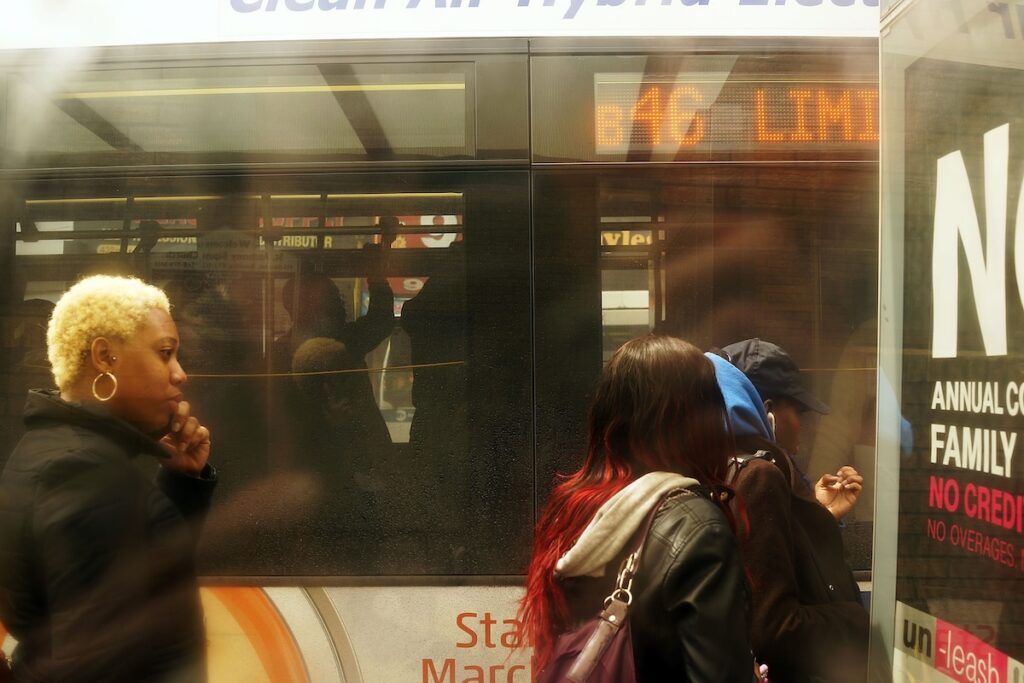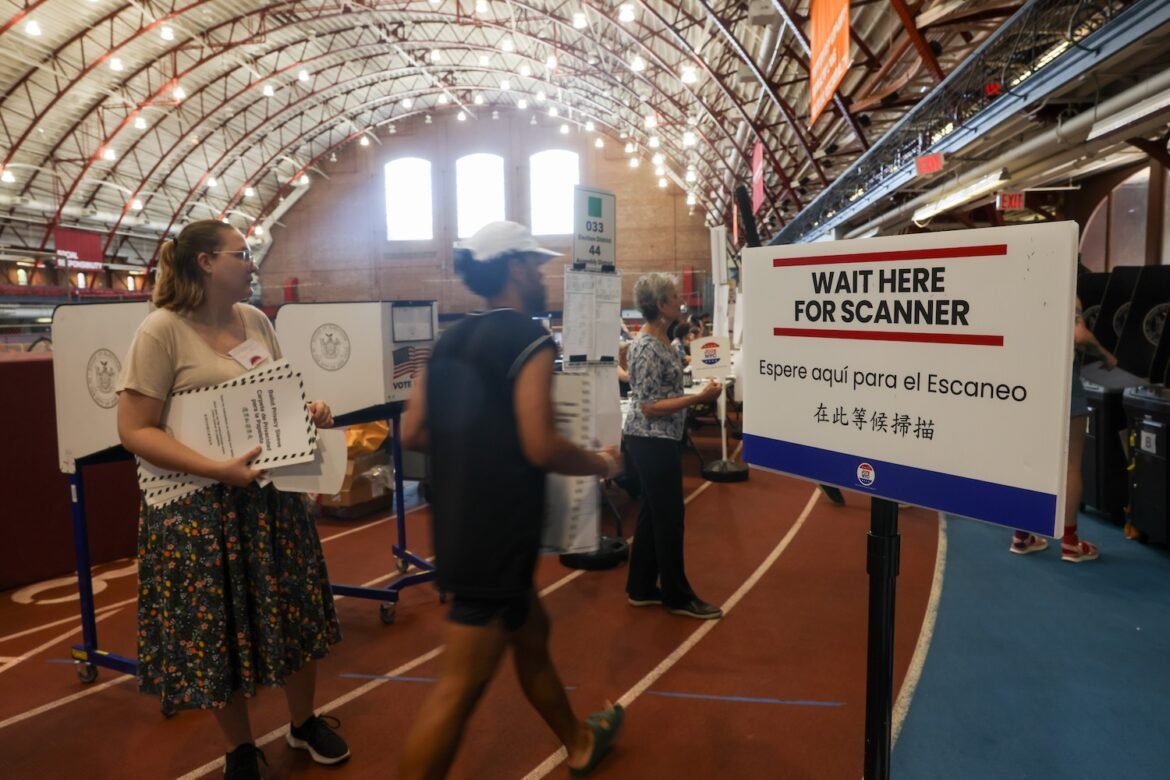
For many Gen-Z New Yorkers, the mayoral election is not merely a routine political event; it’s a defining moment in our broader social landscape–a once-in-a-generation opportunity to reclaim our government, and by extension, our communities.
Faced with skyrocketing costs, growing distrust in institutions, and general insecurity about the future, young voters are demanding bold solutions to the city’s most pressing issues, widely believing it is time to challenge the status quo at a foundational level. Whether it’s demanding affordable housing, expanded mental health support, or a livable future, Gen-Z knows how important it is to make their voices heard at City Hall.
However, the longest-standing question in American politics has been asked and answered with Zohran Mamdani’s historic win in the Democratic primary on Tuesday, June 24. And, for anyone still wondering whether the youth would show up—they did, pushing, barring some wild swings, the 33-year-old Queens assemblyman to the general election this fall, when he’s expected to take on and beat federally indicted incumbent Eric Adams.
Ahead of this year’s primary, we spoke with a few Gen-Z New Yorkers who planned to vote to get a sense of what brought them out to help the unthinkable happen at the ballot box last night.

Photo via Getty Images
Affordability and the housing crisis
One of the most defining issues in this race is that of affordability amid rising inflation. A top-of-mind issue for Gen-Z across demographics, the scale of this problem for young people in the city cannot be overstated. And assemblyman Mamdani’s win may have proved it.
The Queens lawmaker placed this issue at the very heart of his campaign, proposing a rent cap, or “rent freeze,” which would affect more than 2.4 million tenants living in 1 million rent-stabilized apartments across the city. This would be implemented through the Rent Guidelines Board, which, albeit an independent body, is composed of members appointed by the mayor, giving them considerable influence and leverage over their decisions.
Among the young New Yorkers drawn to Mamdani’s vision is Zoe, a college student in Brooklyn and first-time voter who sees the young assemblyman’s politics as aligned with her generation’s priorities. “I think the most important issues at the forefront of my mind are electing someone who will push back against the Trump administration, [as well as] affordability. I’m a rising senior in college, so soon, I will likely be completely supporting myself, and in New York City, everything is very expensive,” she reflected. “It costs money to breathe!” she chuckled.
Other candidates also centered their campaigns on the untenable costs of living. New York City Council Speaker Adrienne Adams proposed a housing voucher expansion program, which would broaden eligibility to families earning up to 100% of the state median income, or up to $128,000 annually, which would cover half the cost of childcare, or approximately $12,000 per child each year. The expansion is estimated to benefit an additional 1,750 infants and toddlers if the current participation rate in the program remains consistent. Alternatively, State Senator Zellnor Myrie offered a build-and-subsidize approach to the housing crisis, which was part of his broader Rebuild NYC housing plan, aiming to create and preserve 1 million homes in New York City over the next decade.
Roughly 59 % of Gen-Z renters in New York City spend over 30 % of their income on rent, with the median rent in Manhattan exceeding $5,000 in fiscal year 2025, an unsustainable trajectory for working and middle-class people who want to stay in New York City.
Though Zoe already knew she would not be ranking Andrew Cuomo in the Democratic primary election, nor Eric Adams in the general election, she was still deciding who else to rank on her ballot when we spoke.

Photo via Getty Images
Transit, mobility, and public safety
Public transit has also been a chief issue in this race. Fares, accessibility, and public safety writ large all play a massive role in the daily lives of most New Yorkers, as they overwhelmingly rely on subways or buses to commute.
Lily, a college student who attends school in Manhattan but resides in Brooklyn, noted the importance of affordable and safe public transit. “As someone who commutes across boroughs every day, public transit is something I care a lot about and am considering heavily in this mayoral race,” they told me. “I’m drawn to Zohran Mamdani’s platform on addressing this because there is data that shows when people can afford transit, crime goes down, so making buses fast and free would not only make my commute more affordable, but it would also make me feel safer,” they added.
Mamdani has a distinct record on this issue specifically, setting himself apart from his rivals through his leadership on the MTA’s free bus pilot program in September 2023, which was established for one route in each borough. The program ended in 2024 after its funding was pulled from the budget by the New York State Legislature, but the results are noteworthy. Weekday ridership surged by 30%, with the greatest increase among New Yorkers earning less than $28,000 a year. Driver assaults dropped by nearly 40%. Mamdani is now proposing a citywide expansion of the program, funded by a 2% income tax increase on the city’s top 1% of income earners.
Other candidates took more cautious or conventional approaches. Lander, for instance, supports improvements like more frequent service and better bus lane infrastructure, especially in the underserved outer boroughs. On transit safety, Lander emphasized addressing homelessness on the subway by expanding housing and social services. Myrie, on the other hand, advocated for protected bus lanes, while Senator Jessica Ramos called for stricter bus lane enforcement and automatic enrollment in the MTA’s Fair Fares program, which provides half-price MetroCards to low-income New Yorkers.
In contrast, former Governor Andrew Cuomo focused on expanding the transit police force and installing high-barrier turnstiles, positioning himself as the race’s “law and order” candidate. Policing and public safety—particularly in the transit system—are issues for which Gen Z voters are especially attuned to nuance. Many young New Yorkers express a desire for safety, but largely remain skeptical of traditional punitive policing models. Incidents like the police killing of Jordan Neely, a homeless man experiencing a mental health crisis on the subway, have fueled demands for a new approach. Mamdani has proposed replacing parts of the NYPD’s role with a Department of Community Safety, which would focus on violence prevention, crisis response, and unarmed mental health teams. In a public forum. “Police have a critical role… but we rely on them to deal with the failures of the social safety net,” he explained.
This ethos resonated with Gen-Z voters who see public transit not just as a matter of efficiency or economy, but as a battleground for justice, accessibility, and dignity.

Photo via Getty Images
Education, mental health, and childcare
Social services have been a crucial area of interest and impact in this election as well. The city is dealing with chronically under-resourced schools, inaccessible mental health care, and prohibitively expensive childcare. And Gen-Z is loudly looking for candidates offering solutions that will deliver a more inclusive, comprehensive, and effective plan.
Brad Lander distinguished himself on this topic by advocating for intensive “housing‑first” models coupled with wraparound services and expanded mental health courts, hoping to end street homelessness for those with serious mental illness. He also supports expanding involuntary treatment for individuals who pose immediate danger, while ensuring funding for robust, secure treatment facilities.
His platform includes an expansion of youth programs in public schools, fully funding arts, athletics, librarians, counselors, and social workers. Lander proposed universal Pre-K (including both 3 and 4), as well, expanding afterschool and summer programs, and cultivating strong community hubs across schools. Regarding childcare, he champions “Under‑Three,” offering sliding-scale subsidies for costs based on family income. He proposed $500 million in capital grants to build more childcare facilities, higher provider reimbursement rates, and wages tied to credentials, which would triple access to city-supported care while easing financial burdens.
Myrie has also underscored educational reform, outlining a plan to make all after-school programs free citywide, including weekday care until 6 p.m. and summer enrichment, for every public school student, which would cost roughly $400 million. This helps address safety, financial stress for working parents, and the city’s $14,000-per-child annual cost burden.
Mamdani’s proposal calls for the creation of a new agency called the Department of Community Safety to handle mental‑health and nonviolent crisis calls, shifting $600 million from current programs to expand B‑HEARD crisis response teams. On childcare, he supports fully implemented universal pre-K and baby-baskets for newborns, as well as free public college, funded by ending tax exemptions from NYU and Columbia University and redirecting that revenue to the CUNY and SUNY systems.
If his win means anything at all, it’s that Gen-Z can and will quickly mobilize across New York City for a candidate that reflects a bold new vision. And that, in a city long driven by power and corruption at City Hall, young New Yorkers are urgently seeking an alternative: politics grounded in care, dignity, and an ambitious vision that will improve the day-to-day lives of many and not the few.
The post What’s at Stake for Gen-Z in The NYC Mayoral Election? appeared first on BKMAG.

